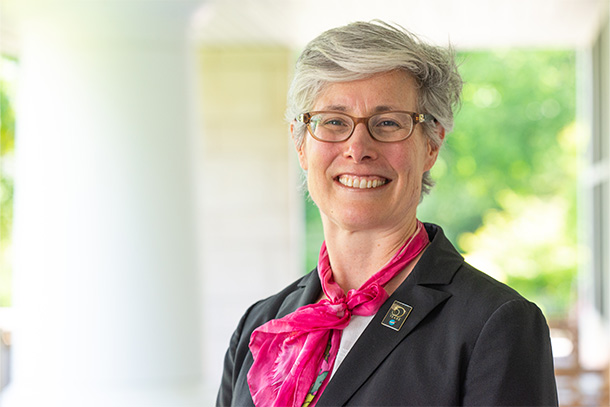
Amy Pritchett, head of the Penn State Department of Aerospace Engineering, and nine colleagues from universities and aviation research organizations will issue six reports over the next 10 years on commercial aviation safety. Credit: Penn State College of Engineering. All Rights Reserved.
Aerospace engineering department head at helm of aviation safety report
October 20, 2022
By Mariah Chuprinski
UNIVERSITY PARK, Pa. — Commercial air travel has become increasingly safer over the last several decades, according to industry statistics, but government agencies and researchers continually pursue ways to improve it.
Amy Pritchett, head of the Penn State Department of Aerospace Engineering, chairs a 10-person committee that published its first report on emerging commercial aviation safety trends in the United States, sponsored by the National Academies of Science, Engineering and Medicine (NASEM). Pritchett presented the committee’s results on a live webcast hosted by NASEM in August.
“There have been very few fatal accidents per million departures in the last 20 years,” Pritchett said. “This allows us to get ahead of accidents and analyze safety trends as they are now and characterize potential future events.”
Pritchett and nine colleagues from universities and aviation research organizations will issue six reports over the next 10 years on commercial aviation safety. In its first report, the committee identified data sources and types of analysis that stakeholders across the aviation industry use to manage and monitor for safety concerns.
“Our committee found that there are many structures in place to continuously monitor for potential safety concerns that stakeholders are already aware of,” Pritchett said. “Next year, the committee will explore how to predict safety concerns that no one has yet suspected, particularly in the face of important trends such as increasingly-complex designs and new types of operations.”
Pritchett said there are a lot of research directions the committee can take to capture all the ways aviation safety hazards can arise.
“There is a lot going on, including many different types of data, types of analysis and different stakeholders, such as pilots, air traffic controllers, airline representatives and the Federal Aviation Administration,” she said.
The committee identified several hazards and risks that its future reports might uncover, including changing airline business models, such as changes in operations, airlines and staff training; climate change, including pressures on industry and alternative energy sources; new technologies, including using new structural shapes and 3D-printed materials to manufacture planes; new entrants to airspace, including drones, unmanned passenger flights, air taxis and supersonic vehicles; and new technology systems, including artificial intelligence, technological interdependencies and software that employs safety controls.
“The gap that stood out to us in this initial report was how more predictive analysis can be conducted,” Pritchett said. “We are looking forward to continuing our study on the most significant emerging safety trends so the airline industry can continue to get ahead of issues.”



